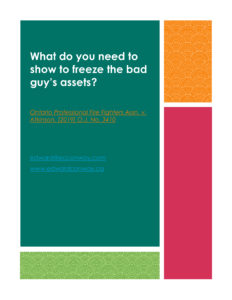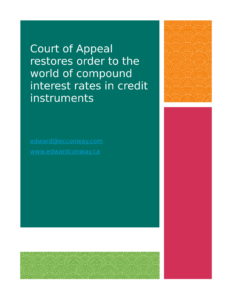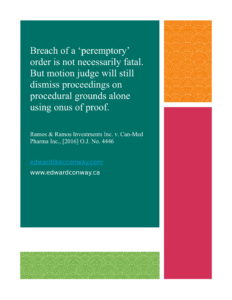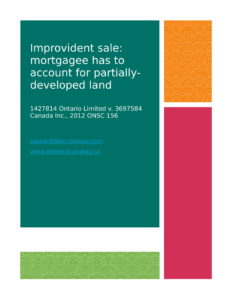collections:
The majority of creditor problems revolve around collection. This is an area many lawyers have little experience with because it involves understanding what the debtor will do to hide assets and make himself judgment-proof. I can assist you in taking steps fast, efficiently and aggressively to get and secure your judgment. The steps I have in mind start with garnishment, writ of seizure and sale and examination of the debtor. Below are some comments on leading recent cases related to recovery of debt:
- Promissory note: what if the debtor evades payment by saying ‘set-off’? (ONCA)
- Guarantee: what is sufficient notice to the bank to stop the guarantee? (ONCA)
- What if the debtor now says that the agreement is a ‘loan’ and that the amount due to you breachs the criminal code s.347?
- Can a debtor escape by putting the assets in his wife’s name?
- Bounced cheques: latest case (ONCA)
- Can a fraudulent misrepresentation judgment debtor escape judgment using the Bankruptcy Act? (No)
- Can a judgment debtor (breach of fiducuary duty) escape judgment using the Bankruptcy Act? (Yes)
oppression remedy for creditors:
The other creditor issue I have been involved with over many years, is the oppression remedy. It is a tool that I have used in cases where the debtor has ‘re-arranged’ his assets so as to make it look like he owns nothing in his name. The oppression remedy has been used in these types of cases to effect.
mortgagee-in-possession:
I have acted regularly for mortgagees in possession. quickly taking possession and liquidating real estate. It is often the case that new clients bring me poorly written mortgages. I have repeatedly had success in taking possession in such cases. It is one area where the Ontario courts recognize the need for speedy judgment. You will see below some of my comments on mortgagee sale cases in Ontario.
speed is critical:
The important thing about creditor issues is usually speed. Securing assets or imposing liens and restrictions, certificates of pending litigation etc. as early as possible in the process to at least make sure there is something to get at.
Is your document written correctly:
Credit instruments are often not written well. What I mean is that they are not written so that a court will quickly enforce without having to ‘interpret’. Whenever a creditor has to face a judge who is about to interpret the creditor’s document, its usually the creditor who suffers. An example of this is the Clear Flow Finance case
Here is another example of a badly-written mortgage where the mortgagee loses all or substantially all of the profitable clauses in the mortgage (other than the simple interest clause).
Another example (225 Ontario v Furney)where the mortgagee was forced to abandon all of the mortgage interest in order that his mortgage was not subject the ‘criminal interest rate’ attack, shows two things: (i) that many mortgagees simply assert claims in a notice of sale and in a discharge statement which are not collectable, in the vast ocean of the credit market few of these mortgage documents ever go to court but those mortgages that do go to court regularly get struck back to a rate below 60%. (ii) mortgagees and courts have evolved the rough and ready method of abandoning (blue-pencilling) part of the claim in order ot secure the principal and commitment fee or interest below 60%. Post judgement interest is collectable at the (below 60%) mortgage rate. Here is my comment on the Furney case
Saying ‘clarity of language’ is easy. Writing the credit instrument with sufficient simplicity while still getting the maximum return and security is not as easy. that is why the courts are filled with creditor-debtor cases with mortgages being read-down.
I have a few case commentaries below for you to review to see the kinds of things i am talking about.
Call me for a free discussion of your credit issue.












